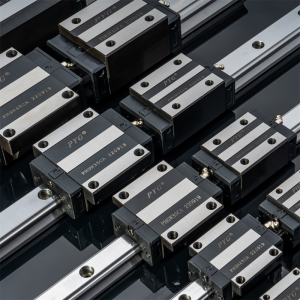Linear guides play an important role in ensuring the smooth and accurate movement of mechanical equipment in various industries. However, in some cases, the needs of the application equipment may require a longer length than a standard linear guide can provide. In this case, it is necessary to splice two or more linear guides together. Today, PYG will explain the splicing and installation process of linear guide rails, and emphasize the important precautions for safety and reliability of splicing.

Splicing Installation Process:
1. Preparation: Before starting the splicing process, ensure that you have the necessary tools and equipment. This includes a clean and flat work surface, an appropriate adhesive or joining mechanism, and the linear guides with correct dimensions for splicing.
2. Measure and Mark: Measure and mark the points where the splicing will be done on the linear guides. Ensure accurate measurements to avoid misalignment during splicing.
3. Ensure Cleanliness: Thoroughly clean the splicing surfaces of the linear guides to remove any dirt, dust, or oil. This will ensure effective adhesion or joining.
4. Apply Adhesive or Joining Mechanism: Follow the manufacturer's instructions to apply the adhesive or join the linear guides using the chosen joining mechanism. Be cautious not to apply excessive adhesive or insert inaccurate joining components that may compromise the overall stability and performance of the spliced linear guide.
Precautions for Safe Splicing:
1. Accuracy and Alignment: Precision is crucial during the splicing process. Ensure accurate measurements, proper alignment, and equal spacing between the spliced sections of the linear guides. Misalignment can result in decreased performance and premature wear.
2. Mechanical Integrity: The spliced linear guide should maintain the same mechanical integrity and rigidity as a single, uninterrupted guide. Carefully follow the manufacturer's recommended guidelines for adhesive application or joinery to guarantee structural stability and durability.
3. Regular Inspection: Once the splicing is done, regularly inspect the spliced linear guide for any signs of wear, misalignment, or loosening. Regular maintenance and inspection will help identify and address any issues promptly.
Spliced linear guides allow extended lengths to suit specific application equipment requirements. However, following the correct installation process and taking the necessary precautions to ensure the safety, accuracy and durability of the splice linear guide can guarantee the smooth operation and reliability of the machine and equipment.
If you want to know more details, please contact our customer service, customer service will reply to you in time.
Post time: Aug-28-2023






